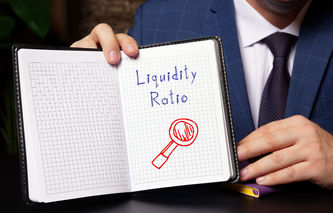Shareholders are part owners of a company. The money received from the sale of common stock can be used to produce additional profits, and provide shareholders with a return on their investment. As analysts, we can examine efficiency ratios to determine if a company is using this capital competently.
In this article, we're going to be examining efficiency ratios. As part of that discussion, we'll start with a brief overview of financial ratios. Next, we'll review the five most commonly used efficiency ratios: cash turnover, accounts receivable turnover, accounts payable turnover, and the cash conversion cycle. Then we'll finish up with the pros and cons of these measures.
Efficient Operations
Some companies have a competitive advantage in the marketplace; others might enjoy extremely loyal customers. These companies may be able to charge a premium for their service and provide their shareholders with handsome profits. But every business, even very successful ones, should be run as efficiently as possible. If they're not, then they are doing their shareholders a disservice.
Efficiency should never be confused with being cheap. Companies should be looking to derive superior value from their assets. Cheap assets will be constructed of inferior materials and will cost the company more money over the long haul. The desirable attribute is the effective use of resources.
The best run companies never have inventory sitting idly in a warehouse for months, and they never run out of product to sell. They will be on extended payment terms with their suppliers, and they will be able to quickly collect money from their customers. Efficiency ratios allow the investor to make reasonable benchmark comparisons between companies in similar businesses.
Cash Turnover
This first ratio can be found using the company's income statement and balance sheet. Cash turnover tells the analyst how many times a company replenishes cash with revenues. Generally, a high cash turnover ratio is better than a low one.
Formula
Cash Turnover = Revenues / Average Cash and Cash Equivalents
Interpretation
Comparisons should be performed between companies in similar industries. Ideally, an analysis should also include the trends of this measure over time. Companies with higher values are indicative of more efficiently run businesses. This first ratio is a very broad measure of performance.
Inventory Turnover
This next metric tells the analyst how well a company manages inventory. Once again, this measure takes information from both the income statement and balance sheet. Typically, higher values of inventory turnover are a positive sign.
Formula
Inventory Turnover = Revenues (or Cost of Goods Sold) / Average Inventory
Interpretation
The numerator of this equation contains one of two values:
The revenues flowing into the company each year, or
The costs to produce the items that will eventually flow through inventory
The cost of goods sold variation provides the analyst with a clearer picture of inventory turnover. For example, if a company's ratio is equal to 12, this tells us the company's products remain in inventory for approximately one month. This is why higher values are considered better. However, a very high ratio may also indicate the company does not have enough capacity to meet demand for its product.
Accounts Receivable Turnover
The convenience of credit, and relatively attractive repayment terms, results in the vast majority of revenues starting out as accounts receivable. This brings us to the next measure of efficiency: accounts receivable turnover. This measure tells the analyst how effective a company is at managing the credit they're extending to customers.
Formula
Accounts Receivable Turnover = Revenues / Average Accounts Receivable
Interpretation
Here again revenues are in the numerator, while the average accounts receivable for the year is in the denominator. If credit customers repaid money owed every thirty days, the accounts receivable turnover rate would be around 12. In this calculation, we're making a simplifying assumption that all revenues begin as credit sales.
Typically, most companies require retail credit customers to repay balances in 30 to 60 days. This translates into accounts receivable turnover ratios that are between 6 and 12. If this ratio falls too low, it can indicate problems collecting money from customers. When making comparisons between companies in the same industry, higher numbers should equate to more efficiently run companies.
Accounts Payable Turnover
Companies value having cash on hand. So while it's desirable for companies to be paid quickly for their products (money in), it's also desirable to delay payments to suppliers and trade partners (money out). The accounts payable turnover rate measures how long it takes to pay these suppliers.
Formula
Accounts Payable Turnover = Cost of Goods Sold / Average Accounts Payable
Interpretation
This ratio contains an expense in the numerator. The cost of goods sold includes both raw materials (received from suppliers) as well as labor; so the relationship between the numerator and denominator is not as strong as accounts receivable turnover. A relatively high accounts payable turnover may indicate less than favorable payment terms. Once again, when attempting to determine the quality signal from a ratio, it's important to use an industry benchmark.
Cash Conversion Cycle
A discussion of efficiency ratios would not be complete without mentioning the cash conversion cycle. This metric not only tells the analyst how much cash is tied up in inventory, but also its ability to collect money owed by customers as well as payments made to creditors.
Formula
Cash Conversion Cycle (CCC) = DIO + DSO - DPO
Where:
DIO = Average Inventory / (Cost of Goods Sold / 365)
DSO = Average Accounts Receivable / (Revenues / 365)
DPO = Average Accounts Payable / (Cost of Goods Sold / 365)
Interpretation
As the above formula demonstrates, this metric combines three sub-measures:
DIO = Days Inventory Outstanding, which measures the efficiency of turning inventory into revenue.
DSO = Days Sales Outstanding, which measures how effectively a company collects money from customers.
DPO = Days Payable Outstanding, which measures how quickly a company pays its suppliers.
Our article dedicated to the cash conversion cycle, provides additional information on this very important measure, as well as an example to illustrate its usefulness.
Pros and Cons
Financial ratios are simple to calculate, typically requiring only a few data points from the income statement or balance sheet. They're useful when trying to understand the performance of a company relative to a competitor or industry benchmark.
They're also a snapshot in time, and historical performance is not always indicative of future results. Finally, these measures should be used as a guide. They're meant to augment other types of financial ratios as well as elements of fundamental stock picking theory such as earnings per share growth rates and value investing.




